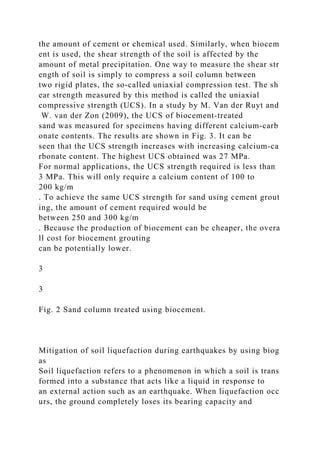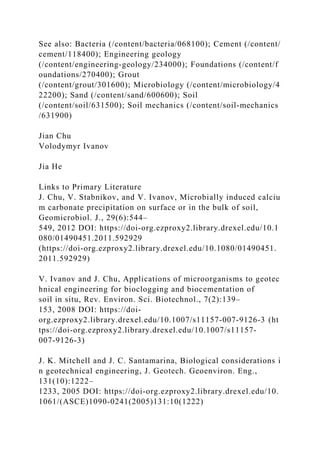The document discusses the use of microbiology in geotechnical engineering, particularly through the application of biocement, a sustainable alternative to cement for improving soil properties. Biocement can enhance the shear strength of soil, mitigate soil liquefaction during earthquakes, and control water seepage and erosion effectively while being more environmentally friendly and cost-efficient. The paper also highlights ongoing research and potential applications of microbial technology in construction and soil improvement.










